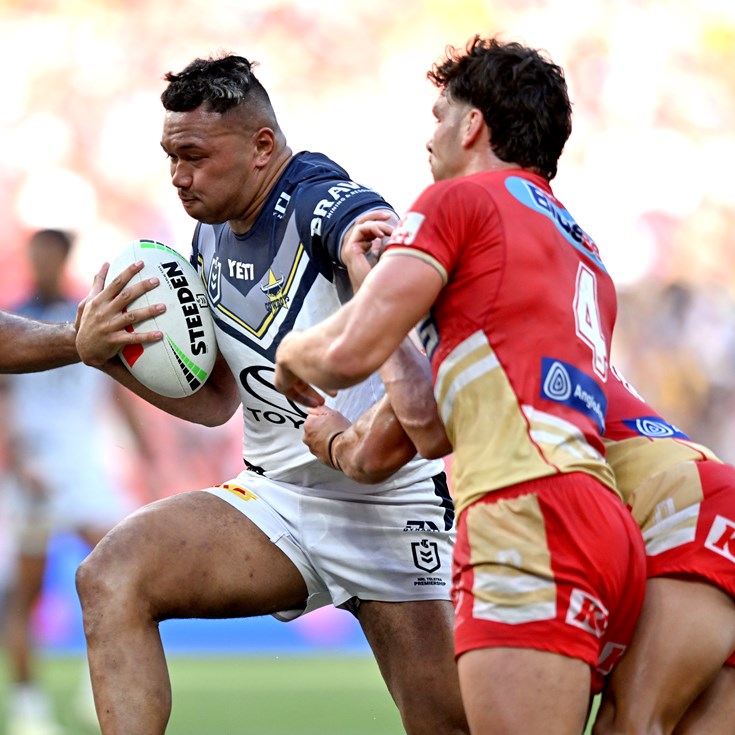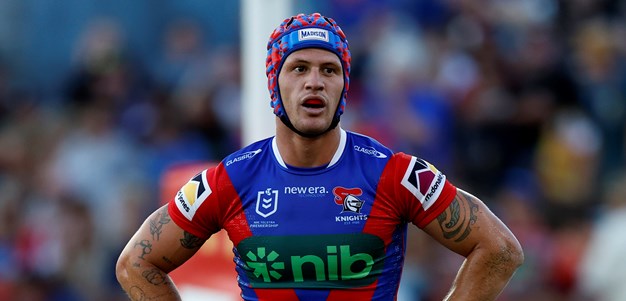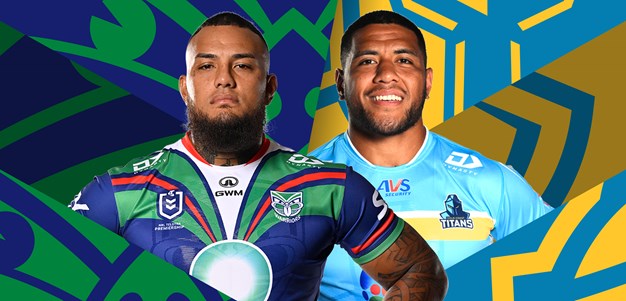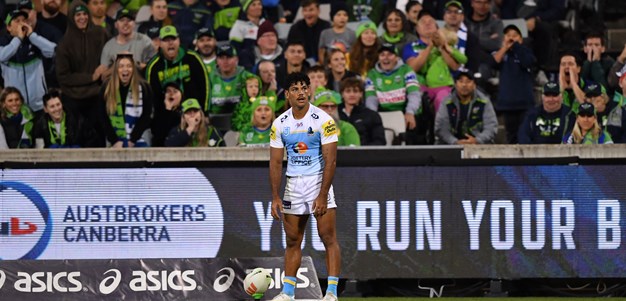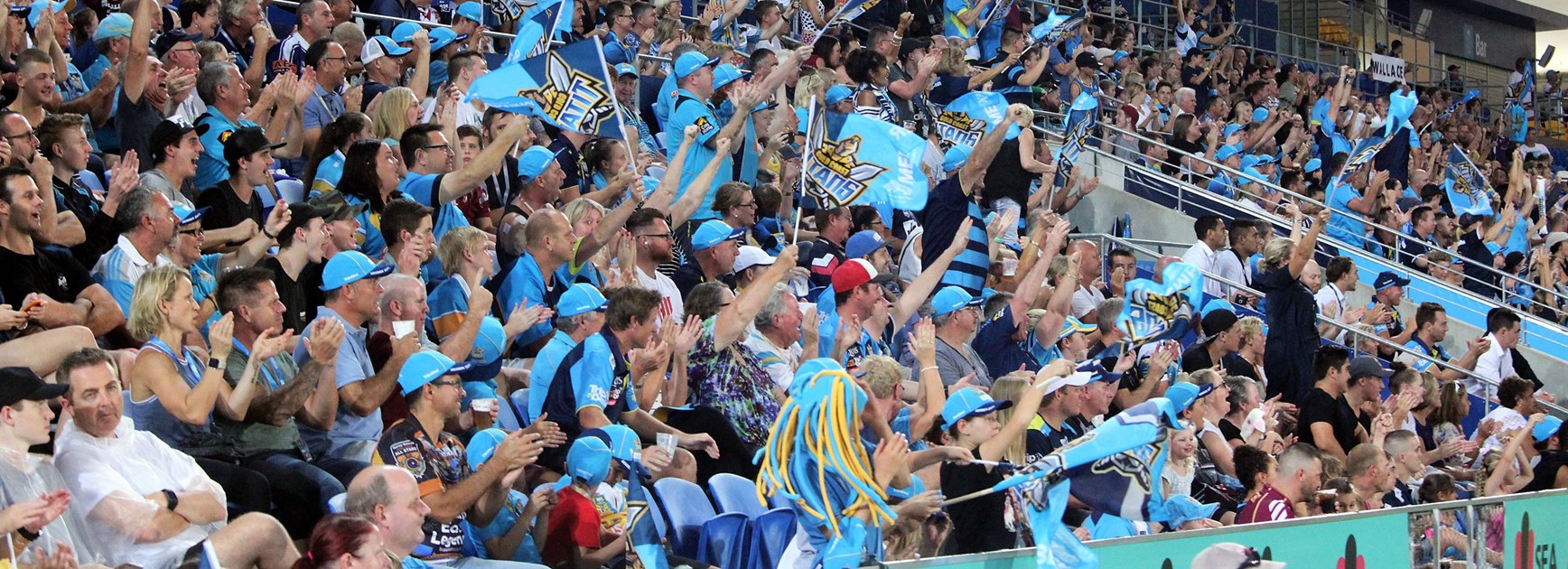
Just seven years ago the Gold Coast Titans were seen as the model new-age NRL franchise, after the club founded by Michael Searle had made the finals in their third and fourth seasons and were one victory away from a grand final.
A new state-of-the-art training and administration base was set to be completed, next to a brilliant new stadium. The league world was at the privately owned franchise's feet.
Instead all things went south, and eventually belly up, and only the intervention and financial lifeline by the NRL in 2015 saved a Gold Coast national league franchise from extinction for a second time (after the Chargers were closed in 1998).
The doomsayers say history shows the Gold Coast will never sustain a national sports team, despite being the country's sixth largest city, and the NRL should not have stepped in to offer life support.
However, new owners – second-time saviour Darryl Kelly and his wife Joanne, plus former chairwoman Rebecca Frizelle and husband Brett – believe the Gold Coast's sixth incarnation (the third under the Titans banner) in the big league can be successful, and lasting.
And they have committed a substantial amount of money behind that belief.
The fact is the Titans have more of the necessary fundamentals of success than several Sydney clubs.
The two men armed with making it work this time around, CEO Graham Annesley and executive chairman Dennis Watt, spoke to NRL.com to drill down into what lies ahead.
We are all worried it we don't get it right this time, it might be the last chance for an NRL franchise on the Gold Coast.
Dennis Watt
The new 'boss'
Watt, a Brisbane Broncos board member for 15 years and chairman for five, had the influential backing to become an ARLC commissioner after deciding to stand down from the club chairman's role at the end of last year.
He instead opted for endless drives down Queensland's M1 because he felt rugby league might benefit better from his vast experience and expertise there.
Watt revealed he was the intermediary who first put Kelly in contact with former Titans powerbroker Searle in 2012. Kelly's friend from Wagga Wagga, former Test fullback Greg Brentnall, asked Watt to provide his mate with an introduction. Kelly went onto invest $5 million in the former entity.
Even from a more hallowed view up the highway at Broncos headquarters, Watt has always felt the Gold Coast desperately needed a successful franchise and kept a supporting eye on their progress.
"Rugby league in this part of the world is so important; the game needs a strong national franchise on the coast," Watt said.
"It is rugby league heartland and there is a real challenge thrown down by AFL to own the Coast; they threw $25 million at the Suns last year.
"I had the opportunity to put my hand up for the Commission but I thought I could so more good for the game down here; bringing my experience from the Broncos and the Storm [where he was NewsCorp's head of rugby league when they were full owners]. But the attraction also was the quality of the people involved in the Frizelles and Kellys."
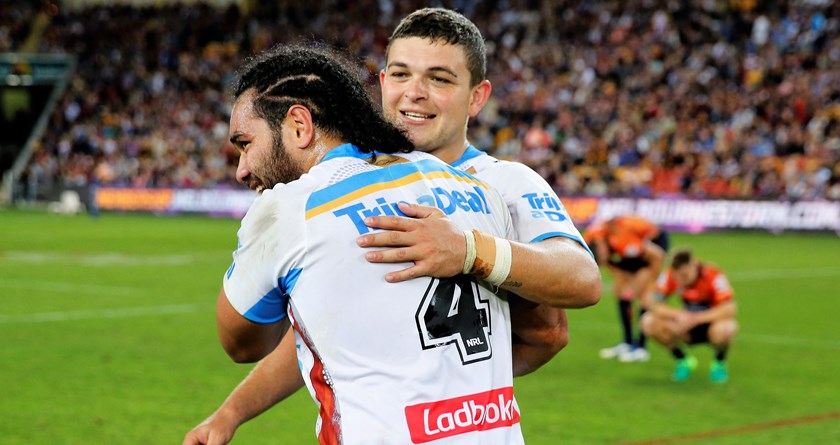
The future
The owners, and the two chief powerbrokers don't concede to the view that the Gold Coast will never support a viable, successful national sports franchise and nor do I for that matter.
However, there have been many struggles in rugby league (Giants, Seagulls, Chargers 1988-98), soccer (Gold Coast United 2009-12), basketball (Gold Coast Cougars/Rollers 1990-96 and Blaze, 2007-12), baseball (Clippers, Daikyo Dolphins, Cougars 1989-99) and the AFL's Suns who, despite many millions of dollars invested by the AFL and cap concessions, have finished no higher than 12th in their first seven seasons.
What is overlooked is more than 6000 junior players (plus that many more seniors) play rugby league from the NSW North Coast to the Gold Coast's northern borders) and the Titans averaged home crowds of just under 20,000 in their first four seasons, second only to the Broncos. The population is far less transient now and there is massive residential development on the north end of the Coast around Coomera.
"We are all worried it we don't get it right this time, it might be the last chance for an NRL franchise on the Gold Coast," Watt said.
"The Coast has a lot of self-made people who have made their mark on the national and international stages in sport, arts and business and I don't see any reason why the Titans can't be just as successful.
"The foundations for success are really good people, and that is the case at the Broncos and the Storm. You start with quality people and need the right people with the right structures, right culture, the right environment.
"The Titans have Graham Annesley as CEO, quality and committed owners, an up and coming coach; there are real pockets of excellence in that business. Some of the things the Titans do are as good as any club in the game; I'm talking about community programs and player welfare and other areas.
"Despite what they have been through over the years there is an extraordinary amount of resilience in the club which is a great foundation stone for future success."
The finances
When the NRL saved the Titans from folding in February 2015, outsiders saw them – rightly or wrongly – as a basket case.
The perception is unfair.
Part-owner Kelly has stated the previous models could never work long term.
The Titans have operated on the smallest football budget, and probably the lowest overall turnover, in the past few seasons with the NRL analysing every dollar spent.
Taylor praises Brennan
Annesley says while the new investors will never throw money "willy-nilly" for no responsible reason, not only will losses now be underwritten, the Frizelles and Kellys are prepared to pump in millions more and some exciting announcements are pending surrounding further substantial investment in previously unavailable revenue streams.
"It was not coincidental that the decision to sell the club coincided with the NRL's new funding model that has clicked in for all clubs this year, which sees funding to the club around $3 million in excess of what we pay players which is a first in the game's history," Annesley said.
"That doesn't get us to break-even but it gets us close.
"There are some clubs in the competition who are seen to be the heavyweights and most people will tell you they are very well-run clubs with a strong financial base but the fact is they are only strong financially because they have external sources of funding.
"When we compare apples with apples across the entire NRL, our losses are at the lower end compared to other clubs who are perceived to be very professional clubs.
"We run the lowest cost football operation in the NRL yet we have excellent facilities, we are spending most of the salary cap and we have all the staffing we require. So, we are not that disadvantaged compared to other clubs but we are doing it very economically.
"The Kellys and Frizelles have indicated they will invest in the club as long as management can demonstrate there is a return on investment. They have invested in this because they believe it is a good thing or the Gold Coast; they won't make them any money from it – they will never make dividends or profits from the club and in fact the way they have established it is they can't take profit from the club if it gets to that point."
The football team
No team has had the turnover of players, and staff, as the Titans. Only two players are left from the 25-man NRL squad of 2014 – Ryan James and Anthony Don. There is not one survivor of Neil Henry's coaching and performance staff of 2016.
When it comes to NRL experience and representative talent, the Titans are behind just about every club with not one current Australian international (however they have regular Kiwi Test forward Kevin Proctor); Jarrod Wallace and Nathan Peats are the only current Titans to have played State of Origin in the past seven years and Konrad Hurrell (Tonga) is their only player who competed in last year's World Cup.
The upside is rookie coach Garth Brennan's squad is littered with players with their best years ahead, including richly re-signed Ash Taylor, Kane Elgey, Jai Arrow, Phillip Sami, Max King, and newcomers Bryce Cartwright and Brenko Lee.
"We feel we have a roster that can compete with any other team in the competition," Annesley said.
"It is a young squad and we, and our fans, need to have patience but we also need to show improvement. We need to have a team the community can be proud of, who they think that even when we lose games the opposition can feel they were hard to beat; to have a team that is in the game until the death."
Brennan's predecessor Neil Henry deserves credit for identifying the Titans had no choice than to be a development-club and the new coach endorses that philosophy as the only viable direction. While the benefit may take quite some time to appear, it is the right path to provide an enduring existence.
"We need to be a developing club and a living breathing part of the Gold Coast and in particular the rugby league community," Watt said. "There are 10,000 players, junior and senior, in Gold Coast, Group 1 and Group 18 competitions. That is a great reservoir of developing talent."
The support
Annesley admits the public sentiment when he joined the club in October 2013 was "pretty negative" with three poor on-field seasons following the wide community-condemnation of the events surrounding the centre of excellence building, where the dispute between the club and builders led to many local tradespeople and construction businesses badly caught in the crossfire and many, many residents vowing to no longer support the Titans.
"There seems a great sense of anticipation and confidence going into this season when you look at our roster, new head coach and new coaching staff," offered Annesley.
It may surprise the critics but the Titans averaged 19,981 in their first four seasons – 2007-10, so not that long ago – and, despite finishing 15th last year, had average home crowds of 13,688, placing them ahead of seven clubs including 'iconic brands' St George Illawarra and South Sydney plus Wests Tigers, Cronulla (premiers the previous year), Penrith, Warriors and Manly (last on 11,251).
However, their membership is the lowest in the Telstra Premiership.
"There is a really good hard core there", Watt says, however he is a realist who knows membership numbers have to climb.
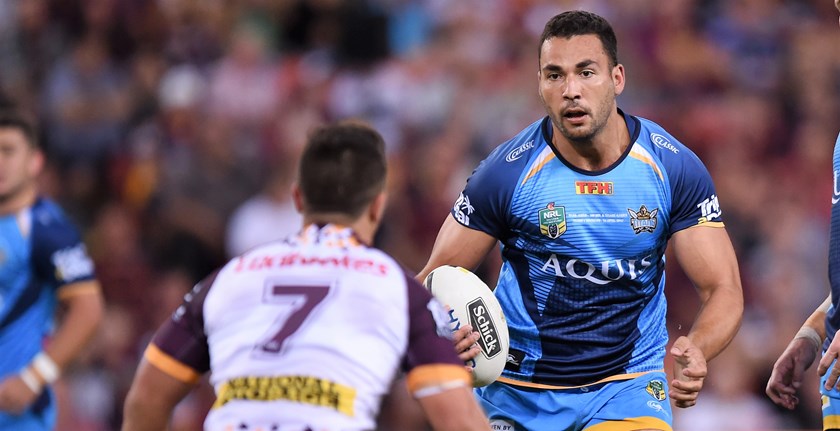
The stadium
The Titans were handed arguably the best suburban stadium in the NRL, at Robina, yet one of the poorest tenant deals.
They are unique in the NRL in that their hiring agreement has been purely on a game-by-game basis for the past three seasons because they cannot come to a long-term agreement with the Queensland Government-owned Stadiums Queensland.
Annesley revealed he hoped an agreement was not far away after three years of negotiations.
"We're not going anywhere but we are not going to lock into a long-term arrangement that is unsatisfactory for the club. We have a firm view around how the deal should be structured."
The Hayne experience
The Titans hierarchy will defend claims the $1.2million a year investment in Jarryd Hayne was a waste of money ($400,000 each year came in a marquee player allowance from Trip A Deal); that commercially he paid his way – through the profile he brought during his 13 months with the club.
One thing they can't argue is that neither the team's win-loss record or average crowds improved during his stay, the two-time Dally M winner earned just 10 Dally M points in his 23 appearances.
Annesley denies his highly publicised signing, on the back of the reneging of Daly Cherry-Evans, was any sort of 'rebound' signing to prove the Titans could compete with the best in securing marquee talent.
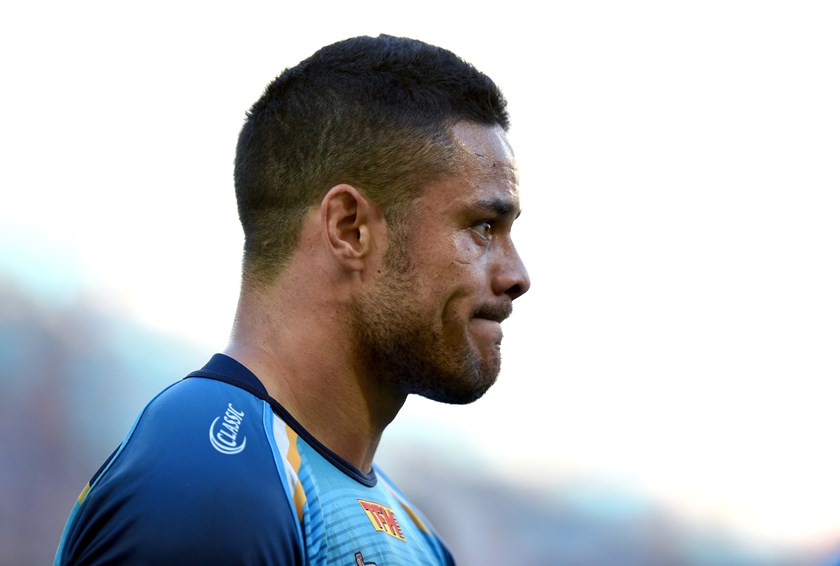
"With the buying of any player, it is an investment, a risk; sometimes those investments work out and sometimes they don't," Annesley said.
"There were very few people bagging the purchase at the time; many people were saying it was the most exciting thing the Titans had ever done. It was certainly the highest profile thing the Titans had done. The Titans have never had as much publicity outside of the Gold Coast as we did during Jarryd's time here.
"Of course, we can look back with hindsight saying it didn't work out on the field how we, or Jarryd, would have liked but off the field, commercially, he did quite well for us.
"You can't be too timid in this game; sometimes you have to be bold to make advances.
"We have a massive investment in Ash Taylor for the next four years and he has to perform for us; that's the nature of the business. There is a risk, a player can get injured in a trial or even at training like Kane Elgey did two years ago [after signing a rich deal]; he did not pull on a boot for us that season.
"Of course there is an element of risk and you can't sit back and say we won't take that risk again."
NOTE: Neil Cadigan was the Titans media manager from 2014-16.
